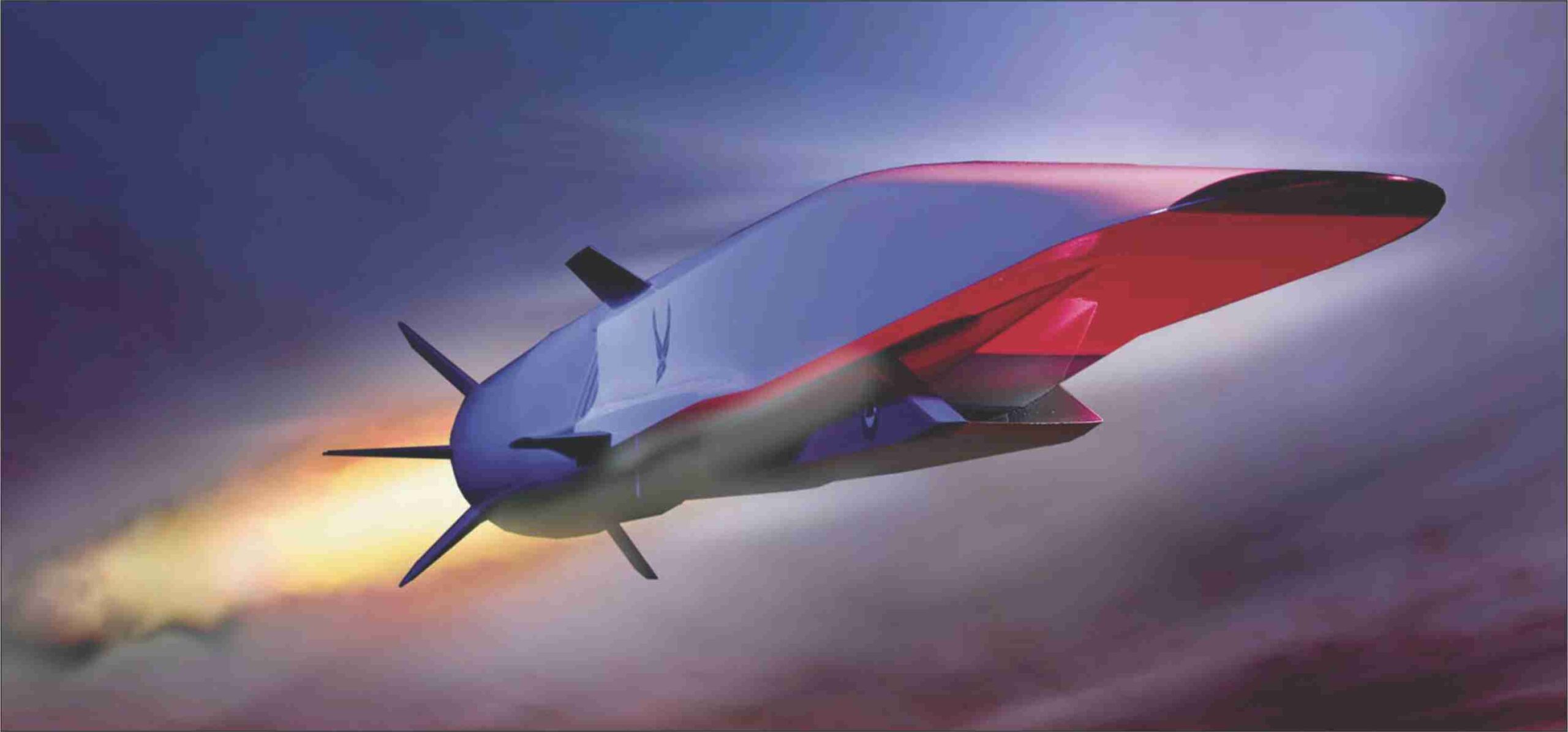Most militaries are now focusing on hitting a target with a missile or autonomous weapon anywhere in the world in less than an hour which is steadily encouraging the development of hypersonic weapon that can decimate a target with high level of precision as well.
Both the US and China are getting into a race for developing such weapon at quickest possible time. Moving from the experimental phase to construction and deployment, however, is still a ways off. But recent activity on this front by the Chinese military is quite surprising.
In recent years, China has performed an unsuccessful second test of its WU-14 hypersonic glide vehicle. The US in turn tested its Advanced Hypersonic Weapon (AHW) from the Kodiak Launch Complex in Alaska a year ago. Both the tests were unsuccessful.
China surprised many in the defence community in January 2014 when it tested a related device that can detach from a ballistic missile and be steered toward its target.
However, the US is conducting its own tests of various systems under development by the Defence Department, all of which would be capable of delivering conventional or nuclear weapons at speeds of Mach 5 or faster, so at least five times the speed of sound.
Recently, the Pentagon saw improvement in a trial run of a hypersonic device known as a scramjet that was attached to a B-52 bomber. This shows that after the trial now the US Army has announced that it will undergo a second test of its hypersonic weaponry soon.
Spending on the scramjet technology for the B-52 cost about $250 million from 2004 through 2011, now the Pentagon has estimated that its Advanced Hypersonic Weapon program would cost about $600 million over the next five years.
High-speed targets
The programs have been more than a decade in the making. The US Defense Department first identified the capability as one of its missions in 2003.
The Pentagon says these types of weapons will be ideal for hitting mobile military units or terrorist groups that do not stay in one place for more than a day at a time.
Using existing weaponry would take days to hit those targets, according to the US Defence Department, because it would require getting forces into position before launching an attack.
And because the delivery systems for hypersonics are capable of delivering conventional weapons instead of nuclear warheads, the missiles offer more precision.
Critics of the program point out that because the missiles are very similar to those used for nuclear weapons, adversaries would not be able to tell the difference, leading some to erroneously suspect they are coming under nuclear attack. For countries with nuclear capabilities, that could lead to a counter-attack.
Funding for development of the Conventional Prompt Global Strike program increased from $174.8 million in 2012 to $200 million in fiscal 2013, even though the Pentagon only requested $110.4 million last year, according to a Congressional Research Service report.
However, NASA defines the hypersonic regime as speeds greater than Mach 5 but less than Mach 25.
It further divides this speed regime into two parts. One is the ‘high-hypersonic’ speed range between Mach 10 and Mach 25.
The other is the range between Mach 5 and Mach 10 referred to simply as the hypersonic speed range (this is about 5300 to 10,600 kmh).
The latter is the speed regime where most of the recent discussion of hypersonic weapons has been focused.
Ballistic missiles with ranges between about 300 and 1000 km travel in this speed range, but they generally do not travel long distances through the atmosphere at these speeds.
Usually when hypersonic weapons are discussed people are referring to machines that can sustain flight in the Mach 5 to 10 speed range for a significant distance and period of time measured in minutes. For perspective, the Concorde supersonic transport cruised at Mach 2.
Press reports indicate there are only three nations with hypersonic weapons programs: the US, Russia and China.
In November 2011, the US Army conducted a successful test of the Advanced Hypersonic Weapon (AHW) demonstrator.
Ultra supersonic weapon
This is a hypersonic glide vehicle similar in concept to the reported Chinese system. A hypersonic glide vehicle couples the high speeds of ballistic missiles with the maneuverability of an aircraft.
The goal of the AHW test was to collect data on hypersonic glide vehicle technologies to inform possible future designs.
The test used a three-stage missile booster system to power the test vehicle to hypersonic speed and evaluated its performance on a flight over the Pacific Ocean.
A second US approach to hypersonic weapons made a similar advance in May 2013 when the US successfully tested the Boeing X-51 hypersonic research vehicle.
It is powered by a supersonic combustion ramjet or ‘scramjet’ engine and flew about 306 km in three and a half minutes at just over Mach 5. This was the first successful test of a scramjet-powered vehicle.
The scramjet is efficient at hypersonic speeds, but as the name implies, the air flowing through the engine is traveling at supersonic speed, so the fuel must be precisely measured, injected into the air flow and ignited with extreme speed. Work on what eventually became the X-51 began in the early 1990s.
These successful tests indicate the US is well along the path to solving many of the problems associated with sustained hypersonic flight.
These include the high drag and temperatures generated by vehicles traveling at hypersonic speed and developing an efficient power plant.
Not much is really known publicly about the Chinese program. What has been reported indicates that their initial investments might be focused on building vehicles that can replace the re-entry vehicles usually carried by ballistic missile.
These ‘hypersonic glide vehicles’, as the name implies, are carried by ballistic missiles, but once they descend into the upper atmosphere, their shape gives them much greater range and maneuverability than ‘normal’ cone-shaped re-entry vehicles.
Satellite guidance
So, based on various reports, the Chinese AHW programs might be characterised as working to improve the capabilities of ballistic missiles while the X-51 program is focused on making weapons that behave more like very fast cruise missiles.
Indeed, China and the US have both conducted tests of new hypersonic weapons systems over the past years. Although both tests were unsuccessful, they signal continuing military competition between the two countries, which are each attempting to develop high-accuracy projectiles that can travel several times faster than the speed of sound.
Hypersonic weapons can hit their targets extremely quickly and effectively. If ever made operable, these weapons would be able to travel five times faster than the speed of sound and cover a range of several thousand miles.
Although this phase of the hypersonic arms race between China and the US is fairly recent, the weapons themselves have existed in some form for decades.
However, the weapons that the US and China are now testing belong to a different class of hypersonic weaponry called boost-glide weapons.
Boost-glide weapons are launched by big rockets just like a ballistic missile is, but then rather than arcing higher than the atmosphere, they are put on a trajectory to reenter the atmosphere as quickly as possible. Then they just glide to the target.
Boost-glide weapons are capable of traveling on a trajectory that makes them difficult for missile-defence systems to intercept.
These systems are designed to work against the high arc of traditional ballistic missiles. Boost-glide projectiles travel quickly and at a flat angle, working at speeds and trajectories that flummox existing missile defense technologies.
Prior to the most recent failed launches by China and the US, both nations had successfully carried out test-runs of their boost-glide systems.
Recently, China has further tested its WU-14, a success which served as a sign of China moving towards longer range, stronger retaliatory and potentially preemptive capability.
The US concern is that China may eventually use its boost-glide weapons as nuclear delivery system. This could give China hypothetical nuclear first-strike capability across large portions of the globe, assuming that the US does not develop this capability as well.
In 2011, American successfully test-fired the Advanced Hypersonic Weapon and during that test the AHW flew 2,300 miles in less than half an hour.
The cause for the most recent failure of the AHW in Alaska is uncertain, and the damage at the launch facility was apparently extensive.
Capable of flying faster than Mach 5 and penetrating enemy defences, AHW augurs the US Army’s re-introduction of a potent and necessary capability into its arsenal: intermediate-range offensive fires.
Experts said that the United States’ boost-glide development program does in fact have a clearly defined development objective, and will not start an arms race with China-if anything it is a response to Chinese militarization.
Indeed, by swiftly introducing intermediate-range missiles such as the AHW in a manner similar to the ”Double-Track Decision” taken by NATO during the Cold War, the United States can encourage the global elimination of destabilizing intermediate-range missiles, while ensuring its ability to field them rapidly to enhance deterrence if necessary.
With the ratification of the Intermediate Nuclear Forces (INF) Treaty in 1988, the United States and the Soviet Union eliminated nuclear and conventional ground-launched ballistic and cruise missiles with ranges between 500–5,500 kilometers.
The INF Treaty increased strategic stability (by eliminating a potent class of weapons that encouraged swift retaliation) and contributed to a peaceful resolution of the Cold War.
Since then, China has developed the largest, most active, and diverse ballistic missile program in the world, building hundreds of the destabilizing and escalatory intermediate-range weapons.
These missiles have contributed to China’s growing anti-access, area denial (A2/AD) capabilities and could seek to prevent US forces from operating in the Western Pacific, and threaten to upset regional peace and stability.
According to US Pentagon, China poses a major and growing threat to US joint operational access in the Asia-Pacific region.
Traditionally, the United States has heavily relied on airpower in its power projection and strike concepts of operation.
Difficult to intercept
Airpower, however, is increasingly challenged by the dual threats of structured attacks with offensive missiles and of advanced integrated air and missile defense systems (IAMDS).
Consequently, according to US experts, threats against airpower in the First Island Chain (and increasingly the Second Island Chain) are resulting in a greatly decreased potential force gradient.
China may be able to effectively target US or allied airbases and defend against the limited numbers of aircraft generated.
Additionally, long-range US munitions (such as cruise missiles launched from air or naval platforms) would face mounting difficulty penetrating China’s IAMDS, due to effective defensive sensors, weapons, and networks.
The Air-Sea Battle Concept’s unclassified Implementation Summary circuitously describes the situation as: the nature of heavily defended A2/AD capabilities makes attacking them, either kinetically or non-kinetically, far more challenging.
The US Army can play a leading role in addressing the “conventional strike gap” by developing boost glide intermediate-range missiles.
Fired in salvos from the First and Second Island Chains and equipped with penetration aids, intermediate-range boost-glide weapons would counter enemy offensive effects chains by targeting sites such as high-value space downlink systems, fixed anti-satellite tracking and firing systems, key radars and associated systems, command and control nodes, long-range surveillance systems, and possibly even transporter erector launchers (TELs), TEL reload points, or ships in port.
Boost-glide weapons would excel at penetrating dence IAMDS where aircraft would have difficulty operating.
Additionally, if they were mobile and practiced passive defense measures, they would provide the Joint Force with a potentially more resilient means of attack than tactical aviation, which is vulnerable to airbase targeting.
On the whole, boost-glide weapons would effectively contribute to the Joint Force’s efforts to counter Chinese A2/AD systems and diminish Chinese confidence in their ability to coerce other countries and wage war.
At the strategic level, boost-glide systems and other intermediate-range missile systems may contribute to a cost-imposing strategy against China.
By deploying relatively inexpensive offensive weapons such as boost-glide systems, the United States may asymmetrically drive China to invest in more expensive IAMDS, especially those capable of intercepting hypersonic missiles, instead of offensive, power-projection capabilities.
Therefore, US boost-glide development is oriented toward clear objectives, and research into hypersonic more broadly should be properly interpreted as a response to China’s rapidly advancing military capabilities, including its massive arsenal of intermediate-range missiles.
Some critics argue the use of boost-glide weapons could escalate a conflict, perhaps even prompt the Chinese to use nuclear weapons if its command-and-control system misread an incoming US boost-glide attack on this system as one intended to disable its nuclear forces.
The gravity of the subject of nuclear escalation merits careful consideration, especially if boost-glide systems gain intercontinental instead of just intermediate range.
In fact, it is possible both Russia and China will vociferously protest the development and deployment of such weapons citing nuclear concerns in order to halt their progress.
First, China has a highly secure second-strike nuclear force that boost-glide weapons would be highly challenged to seriously degrade-even if the United States explicitly proceeded to deliberately and systematically target Chinese nuclear forces.
Second, it is against Chinese nuclear doctrine to launch on warning, accordingly, China has designed its forces to be able to withstand a nuclear salvo before successfully counterattacking.
Most importantly, though, it is unlikely China would use nuclear weapons in response to US conventional capabilities, such as boost-glide weapons, because China will become socialized to the US weapon systems.
There are a number of steps the US Department of Defence can take to effectively address these concerns while successfully introducing this necessary class of weapons.
New rivalry
It can, for example, continue to exercise transparency on the development of these systems, and it could announce that it will not co-locate nuclear and conventional ballistic or boost-glide missile systems.
Strategically, the United States can announce that given China’s provocative and destabilizing development of nuclear and conventional intermediate-range missiles, it will develop and deploy similar missile systems (initially INF Treaty-compliant boost-glide weapons) capable of targeting China, unless China agrees to eliminate its own systems.
This parallel process would gradually socialize potential adversaries such as China and Russia to this new class of weapon system and its conventional application, would strengthen the credibility of US conventional deterrence, and if China accedes to such a treaty, would be a victory for regional peace and stability and cooperation between the nations.
If however China does not accede to a treaty that eliminates intermediate-range missiles, be they ballistic, cruise, or boost-glide, it would eventually be forced to adopt an approach similar to that likely adopted by US forces.
In time of war, US forces would likely not fire a nuclear strike upon warning of launch of Chinese ballistic or cruise missiles, because they know China has conventional missiles in its arsenal and they know the resiliency of the US nuclear triad supporting US conventional forces.
If the United States had intermediate-range missiles in its arsenal, Chinese forces would likely adopt a similar approach.
This trend toward loss of geographic sanctuary, including in the continental United States, is part of a broader pattern in warfare resulting from increases in the ranges of reconnaissance-strike complexes-a combination of weapon, intelligence, surveillance, and reconnaissance, and network capabilities.
China’s potential introduction of boost-glide weapons is a worrisome development, given their ability to evade many types of missile defence, but it is not a dramatic departure from China’s current course of steady expansion in weapon ranges.





